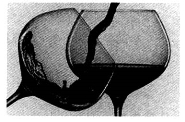题目内容
短文改错
短文中有10处语言错误。请在有错误的地方增加、删除或修改某个单词。
增加:在缺词处加一个符号(^),并在其下面写出该加的词。
删除:把多余的词用斜线(\)划掉。
修改:在错的词下划一横线,并在该词下面写出修改后的词。
注意: 1. 每句不超过两个错误;
2. 每处错误及其修改均只限一词;
3. 只允许修改10处,多者(从第11处起)不计分。
Last Wednesday, we were having our English class when a teacher suddenly slipped and fell. We are all worried about him. One of the boy carried him on the back, with the help of some others, to the clinic immediate. It turned out that her right leg was broken but he had to stay in hospital. The following day, we went to visit him with flowers and fruit. Seen him lying in bed with his leg wrapped in bandages, so we felt sorry for him and hoped that he would recover soon. This Thursday, he returned the class on a wheelchair to give us lessons. We were all deeply moved and proud with having such a responsible teacher.
 云南师大附小一线名师提优作业系列答案
云南师大附小一线名师提优作业系列答案

